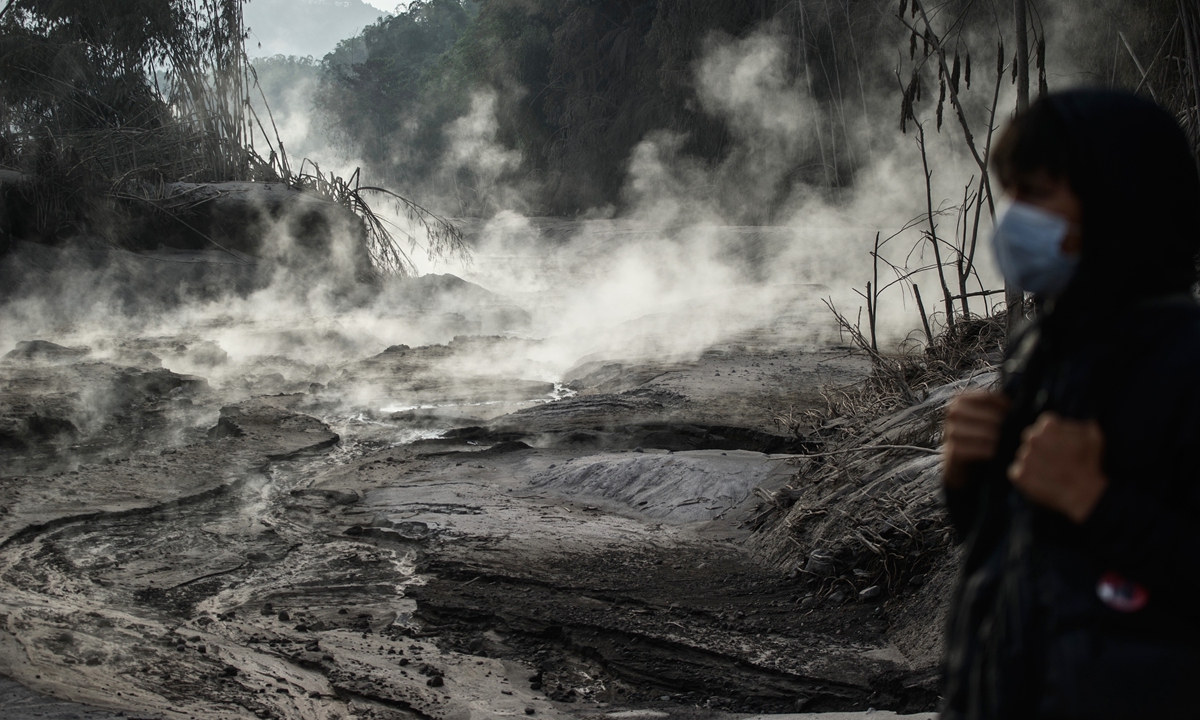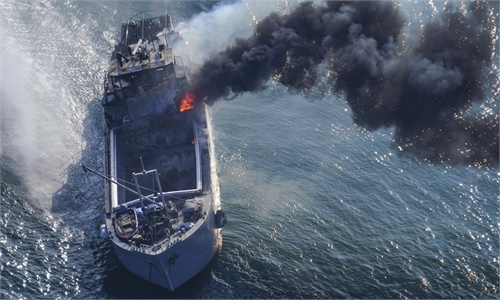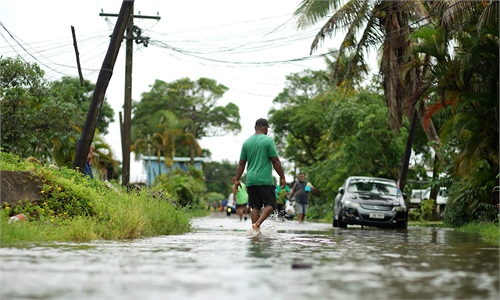2020 weather disasters boosted by climate change: report
Poor nations burdened: yearly tally
The ten costliest weather disasters worldwide in 2020 saw insured damages worth $150 billion, topping the figure for 2019 and reflecting the long-term impact of global warming, according to a report Monday.

Not surprisingly, the burden fell disproportionately on poor nations, according to the annual tally from global NGO Christian Aid, entitled "Count the cost of 2020: a year of climate breakdown."
Only four percent of economic losses from climate-impacted extreme events in low-income countries were insured, compared with 60 percent in high-income economies, the report said, citing a study in November in The Lancet.
"Whether floods in Asia, locusts in Africa, or storms in Europe and the Americas, climate change has continued to rage in 2020," said Christian Aid's climate policy lead, Kat Kramer.
Extreme weather disasters, of course, had plagued humanity long before man-made global warming began to mess with the planet's climate system. But more than a century of temperature and precipitation data, along with decades of satellite data on hurricanes and sea level rise, have left no doubt that Earth's warming surface temperature is amplifying their impact.
Massive tropical storms - variously known as hurricanes, typhoons and cyclones - are now more likely, for example, to be stronger, last longer, carry more water and wander beyond their historical range.
2020's record-breaking 30 named Atlantic hurricanes - with at least 400 fatalities and $41 billion in damages - suggest the world could see more such storms henceforth.
The World Meteorological Organization (WMO) had to use Greek symbols after running out of letters in the Latin alphabet.
Intense summer flooding in India, where the monsoon season brought abnormal amounts of rainfall for the second year running, is also consistent with projections on how climate will impact precipitation.
Five of the most costly extreme weather events in 2020 were related to Asia's unusually rainy monsoon.
"The 2020 flood was one of the worst in the history of Bangladesh, more than a quarter of the country was under water," said Shahjahan Mondal, director of the Institute of Flood and Water Management at the Bangladesh University of Engineering and Technology.
Wildfires that scorched record areas in California, Australia and even Russia's Siberian hinterland, much of it within the Arctic Circle, are also consistent with a warmer world and are predicted to get worse as temperatures climb.

A villager watches a steaming stream caused by lava flow in Lumajang, East Java province, Indonesia on Wednesday, following the eruption of Mount Semeru volcano. Volcanic activity in the province has forced at least 550 people to leave their homes, according to the country's disaster agency. Photo: AFP
The same disasters claimed at least 3,500 lives and displaced more than 13.5 million people. From Australia's out-of-control wildfires in January to a record number of Atlantic hurricanes through November, the true cost of 2020's climate-enhanced calamities was, in fact, far higher because most losses were uninsured.Not surprisingly, the burden fell disproportionately on poor nations, according to the annual tally from global NGO Christian Aid, entitled "Count the cost of 2020: a year of climate breakdown."
Only four percent of economic losses from climate-impacted extreme events in low-income countries were insured, compared with 60 percent in high-income economies, the report said, citing a study in November in The Lancet.
"Whether floods in Asia, locusts in Africa, or storms in Europe and the Americas, climate change has continued to rage in 2020," said Christian Aid's climate policy lead, Kat Kramer.
Extreme weather disasters, of course, had plagued humanity long before man-made global warming began to mess with the planet's climate system. But more than a century of temperature and precipitation data, along with decades of satellite data on hurricanes and sea level rise, have left no doubt that Earth's warming surface temperature is amplifying their impact.
Massive tropical storms - variously known as hurricanes, typhoons and cyclones - are now more likely, for example, to be stronger, last longer, carry more water and wander beyond their historical range.
2020's record-breaking 30 named Atlantic hurricanes - with at least 400 fatalities and $41 billion in damages - suggest the world could see more such storms henceforth.
The World Meteorological Organization (WMO) had to use Greek symbols after running out of letters in the Latin alphabet.
Intense summer flooding in India, where the monsoon season brought abnormal amounts of rainfall for the second year running, is also consistent with projections on how climate will impact precipitation.
Five of the most costly extreme weather events in 2020 were related to Asia's unusually rainy monsoon.
"The 2020 flood was one of the worst in the history of Bangladesh, more than a quarter of the country was under water," said Shahjahan Mondal, director of the Institute of Flood and Water Management at the Bangladesh University of Engineering and Technology.
Wildfires that scorched record areas in California, Australia and even Russia's Siberian hinterland, much of it within the Arctic Circle, are also consistent with a warmer world and are predicted to get worse as temperatures climb.



